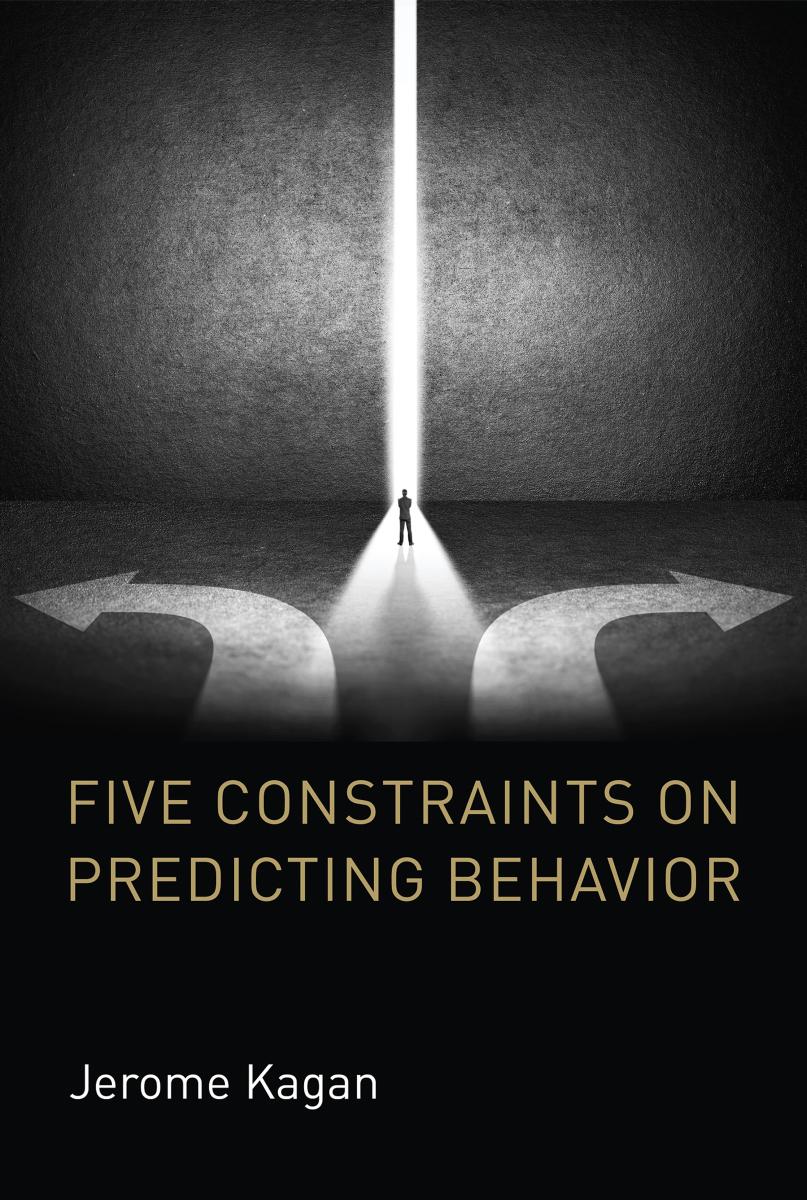Five Constraints on Predicting Behavior by Jerome Kagan

Author:Jerome Kagan
Language: eng
Format: epub, pdf
Tags: behavioral; mental; prediction; brain; mind; psychological outcomes; psychology; expectations; setting; evidence; source; cause; patterns; measures; animals; humans; neuroscience; cognitive science; brain-behavior relations
Publisher: The MIT Press
Published: 2017-09-08T04:00:00+00:00
Can Statistics Detect Single Causes?
The social scientists who believe that some events possess a causal potency that does not require the addition of other conditions often rely on statistics to provide an estimate of the contribution of a single condition to an outcome. It is worth noting that biologists would not use these techniques to control for the contributions of average rainfall and soil quality in order to discover the contribution of temperature to the height of a rose plant because they appreciate that the effect of temperature on plant growth depends on the other two conditions. Roses do not grow in a warm region with sandy soil and no rain. The practice of using statistics to remove the contribution of sex to an outcome ignores the fact that males and females with similar mean values on all measures can display significantly different patterns of correlations.
Structural equation modeling (SEM), the most popular procedure for estimating the contribution of single events, requires four conditions that are not always met or even checked by investigators. The equations require linear relations among the variables, normative distributions without outliers, a ratio of 20 subjects for each parameter, and an a priori plan to examine a small number of relations. The first condition is the hardest to meet because nonlinear relations are common (Lahey, Lee, Sibley, Applegate, Molina, & Pelham, 2016). There is a nonlinear relation between the loudness of a sound and its discriminability, between the wavelength of electromagnetic radiation and its capacity to harm the body, and between annual income and subjective well-being. The attempts to control for the contribution of social class ignore the nonlinear relations between income or education, on the one hand, and incarceration, career choice, abuse of children, and the probability of dropping out of school. Rare or infrequent outcomes are also a problem. A sensitive predictor of an outcome whose frequency is less than 1 percent will correctly classify those who actualize the outcome, but will err by incorrectly classifying many more who do not. Suicide is an example of a rare outcome that is difficult to predict. The prevalence of suicide in the United States has averaged between 12 and 15 per 100,000 over the past century. There are about 250 million Americans over age 15 who have the ability to end their lives. The estimated 27,000 Americans who will kill themselves in 2016 are the outliers that Taleb (2007) calls black swans.
A majority of the statistically significant correlations social scientists report between two variables are attributable to the subjects whose values fell in the top or bottom 15 percent of the distribution. There is typically no relation for the remaining 70 percent of the sample. These relations are non-Gaussian; some are nonlinear. Salivary cortisol levels gathered from more than 18,000 persons of different ages in different laboratories during varied times of the day across the four seasons revealed that age, gender, laboratory, and season affected cortisol values. The occurrence of nonlinear relations between cortisol level and
Download
Five Constraints on Predicting Behavior by Jerome Kagan.pdf
This site does not store any files on its server. We only index and link to content provided by other sites. Please contact the content providers to delete copyright contents if any and email us, we'll remove relevant links or contents immediately.
| Administration & Medicine Economics | Allied Health Professions |
| Basic Sciences | Dentistry |
| History | Medical Informatics |
| Medicine | Nursing |
| Pharmacology | Psychology |
| Research | Veterinary Medicine |
The Art of Thinking Clearly by Rolf Dobelli(10133)
The 5 Love Languages: The Secret to Love That Lasts by Gary Chapman(9505)
Mindhunter: Inside the FBI's Elite Serial Crime Unit by John E. Douglas & Mark Olshaker(9099)
Becoming Supernatural by Dr. Joe Dispenza(8033)
The Road Less Traveled by M. Scott Peck(7469)
Nudge - Improving Decisions about Health, Wealth, and Happiness by Thaler Sunstein(7456)
Mastermind: How to Think Like Sherlock Holmes by Maria Konnikova(7156)
Enlightenment Now: The Case for Reason, Science, Humanism, and Progress by Steven Pinker(7081)
Win Bigly by Scott Adams(7031)
The Way of Zen by Alan W. Watts(6448)
Factfulness: Ten Reasons We're Wrong About the World – and Why Things Are Better Than You Think by Hans Rosling(4621)
The State of Affairs by Esther Perel(4585)
Gerald's Game by Stephen King(4511)
Man's Search for Meaning by Viktor Frankl(4346)
The Confidence Code by Katty Kay(4154)
Thinking in Bets by Annie Duke(4117)
Hidden Persuasion: 33 psychological influence techniques in advertising by Marc Andrews & Matthijs van Leeuwen & Rick van Baaren(3413)
The Healing Self by Deepak Chopra(3395)
The Worm at the Core by Sheldon Solomon(3394)
